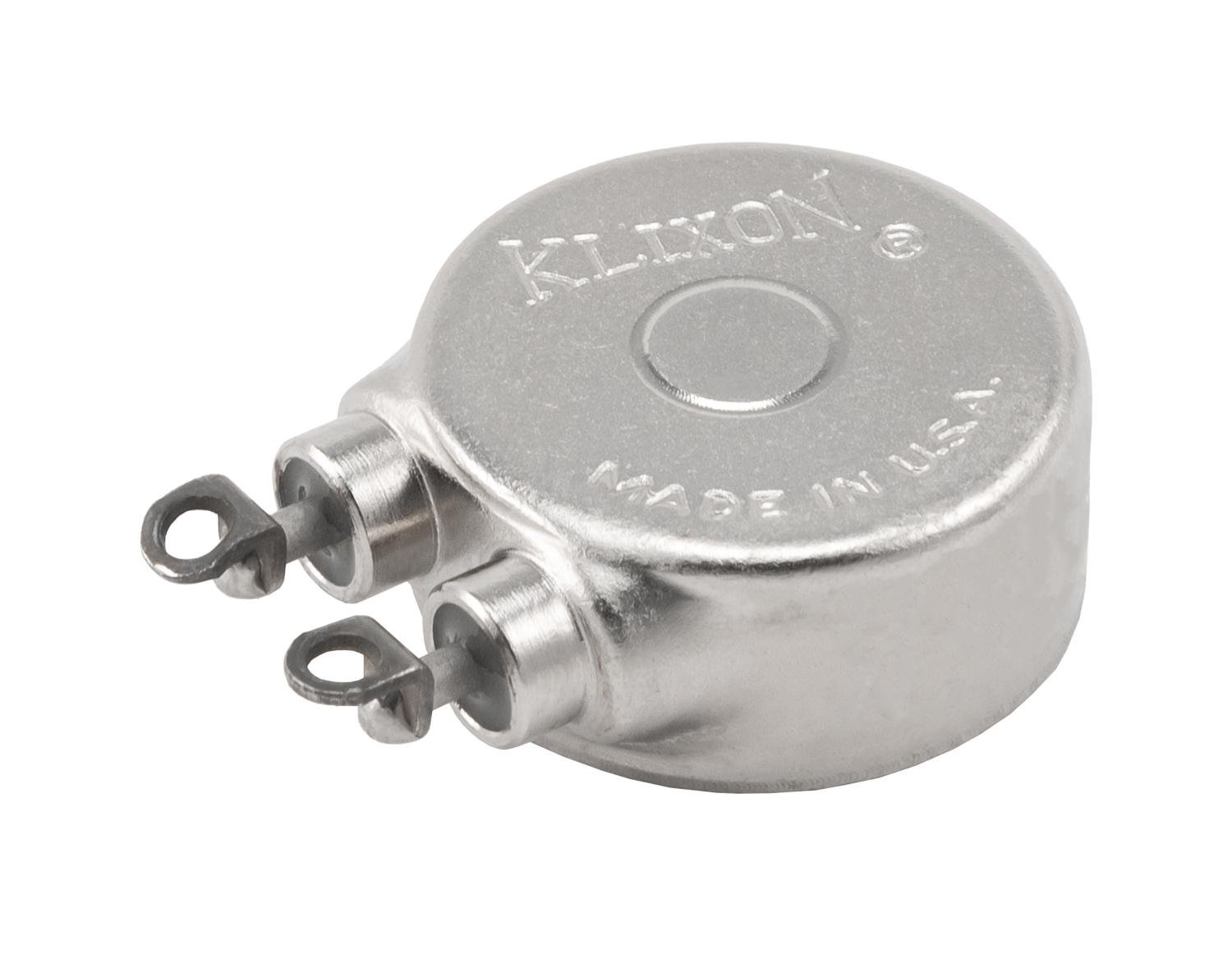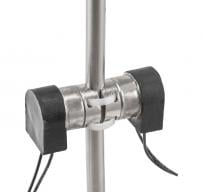M2 Series Space Flight Thermostats G311P641/02
Temperature
Thermal engineers count on the reliability of Sensata | KLIXON® M2 thermostats for the demanding environments required on satellites, launch vehicles, and manned space vehicles. For over sixty years, the tight set point temperatures, as well as exceptional vibration and shock resistance, enabled precise thermal control on satellites such as GPS III, JCSAT-9/-10, the Hubble Space Telescope, SPACE-X Dragon and many others. Each M2 Series Narrow Differential thermostat is vacuum baked and backfilled with inert dry nitrogen atmosphere prior to final sealing to prevent condensation at low temperatures or possible contact contamination at high temperatures. All Sensata space-flight thermostats are assembled in a Class 100/ISO 5 cleanroom and undergo Group A Inspection per Table I of NASA S-311-P641. Inspections include pre-cap visual inspection, millipore cleaning, run-in, vibration, particle impact noise detection (PIND) in addition to the standard tests for calibration, creepage, seal, dielectric withstand voltage, insulation resistance, and contact resistance. Each individual thermostat is serialized and shipped with all inspection/screening test data included in the end item data package.
Distributors Stock
Part #G311P641/02
Need more information?
Contact us to request pricing, availability and customization options
Contact UsFeatures
- Narrow differential provides tight control signal for temperature control
- Single pole/single throw (SPST) bi-metallic snap disc design
- Preset temperature set points, non-adjustable calibration
- Vacuum backed and back-filled with dry nitrogen atmosphere
- Hermetically sealed to maximum leak rate of 1x10^-8 cc He/second
- Qualified to MIL-PRF-24236/20
- 100% screened to NASA S-311-P641
Applications
- Battery systems
- Propulsion lines, thrusters, & rocket motors
- Optics, instrumentation, & electronic modules
- Hydraulic/pneumatic actuators
- Cold plates
- Electric motor pre-heaters & robotic arm controls
Specifications
| Switching action | Single Pole, Single Throw (SPST) |
| Storage temperature range | -65ºF to +335ºF (-53.9ºC to +168.3ºC) |
| Operating temperature range | -40ºF to +235ºF (-40ºC to +112.8ºC), depending on calibrated temperature. Exposure is limited to 100°F above temperature for close on rise devices or 100°F below operating temperature for open on rise devices. |
| Contact rating, Resistive Load | 2.0 amperes at 30Vdc/120Vac, 250,000 cycles 3.0 amperes at 31Vdc, 50,000 cycles |
| Contact resistance | 0.025 ohms maximum, per MIL-STD-202, Method 307 initially and 0.050 ohms maximum after endurance testing |
| DWV | 1250 VAC, rms, 60 cycles for 1 minute, terminal to case, per MIL-STD-202, Method 301 |
| Vibration | 10-2000 Hz, 10G, per MIL-STD-202, Method 204, Condition D (monitored) |
| Shock | 100G, 6 milliseconds, per MIL-STD-202, Method 213 |
| Seal, Hermetic | 1 X 10-8 atm cc/sec. maximum, per MIL-STD-202, Method 112, Condition C |
| Finish | 0.0003 - 0.0004 inches Ni per AMS-QQN-290 over 0.0002 - 0.0003 inches Cu per MIL-C-14550 |
| Weight | 5.4 grams (average) |
| Operating temperature | Temperature at which contacts close. |
| Differential | Subtract (for close on rise) or add (for open on rise) the differential from the closing temperature to determine the temperature at which the contacts will open. |
| Qualification | Qualification listing to MIL-PRF-24236/20 required. |
| Screening | Switches shall be subjected to 100% Group A screening inspection per S-311-P-641, Table 1, Test Nos. 1 – 12, with the following exception: PIND per manufacturer’s GSFC approved internal test procedure; for PIND testing at temperatures below 0°F, consult factory. |
| Closing Temperature Range °F [°C] |
Opening Temperature Differential °F [°C] |
Closing Temperature Tolerance °F [°C] |
| -40ºF to +235ºF (-40ºC to 112.8ºC) |
2 to 5ºF (1.1 to 2.8ºC) |
±4ºF (±2.2ºC) |
| Wire Lead Ordering Code | Wire Type | Lead Length +/-10% Inch (mm) |
Stycast Overmold |
| A | M22759/11-22-0 | 59.0 (1500) | STYCAST 2850FT |
| B | M22759/33-22-0 | 59.0 (1500) | |
| C | M22759/43-22-0 | 59.0 (1500) |
| Tube Mount Adapter Size Ordering Code | Tube Mount Adapter Diameter Inch (mm) |
| A | .256 +.010/-.000 (6.50 +.25/-.000) |
| B | .381 +.010/-.000 (9.68 +.25/-.000) |
| Tube Mount Adpater Orientation Ordering Code | Tube Mount Adapter Mounting Angle (+/-10°) |
| 1 | 0° (Terminal Orientation Parallel To The Tube Direction) |
| 2 | 45° |
| 3 | 90° |
| 4 | 135° |



